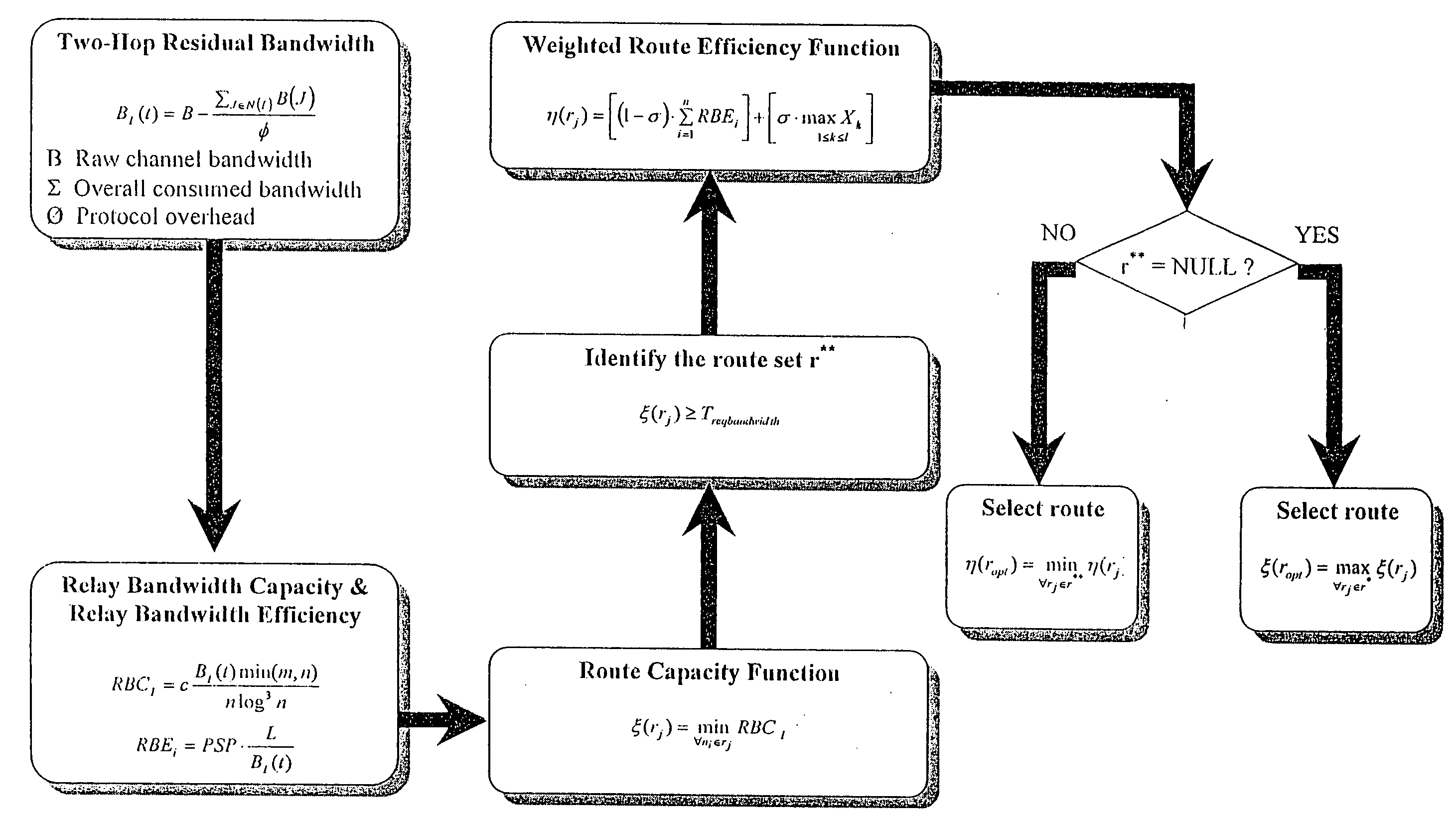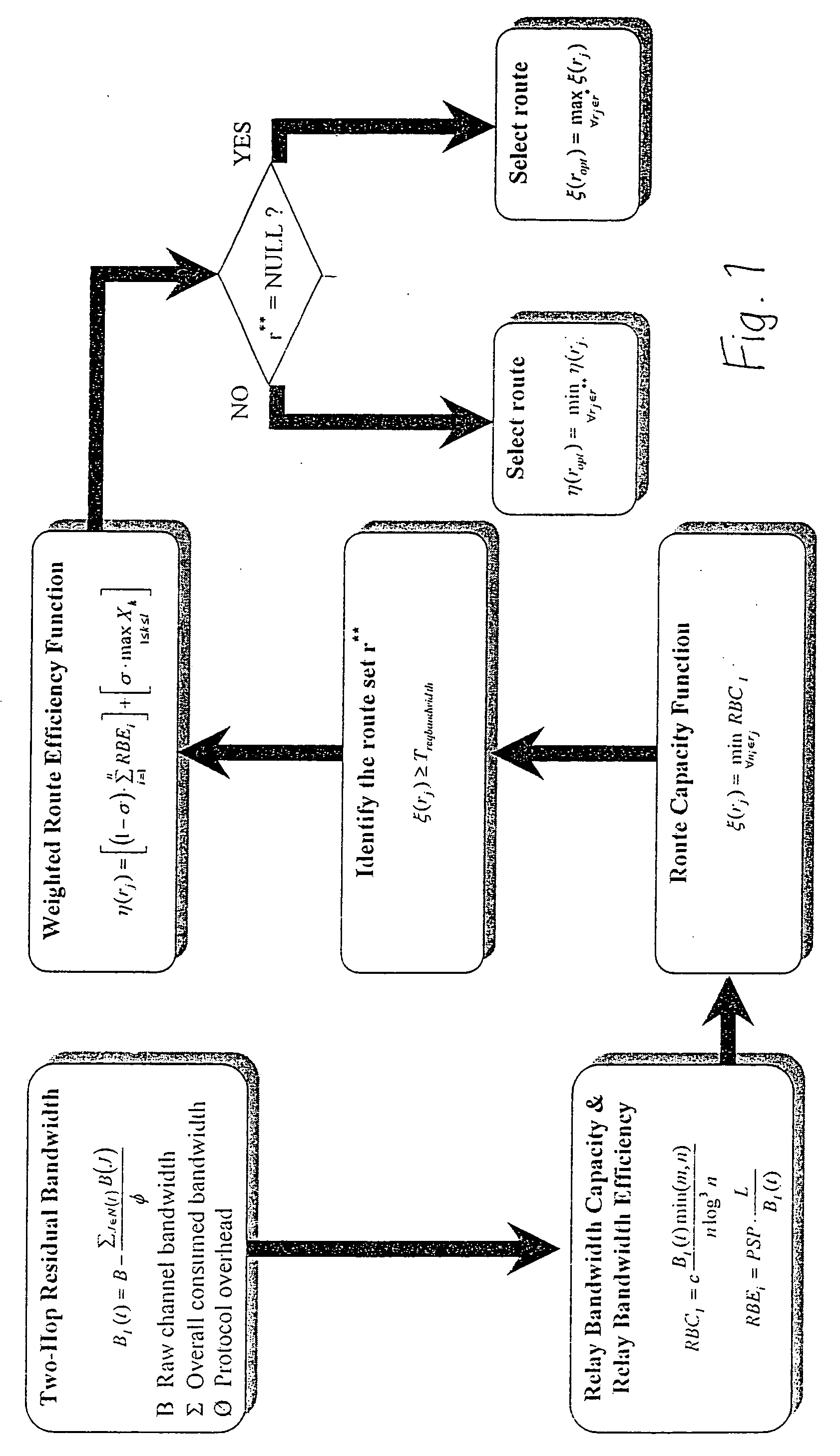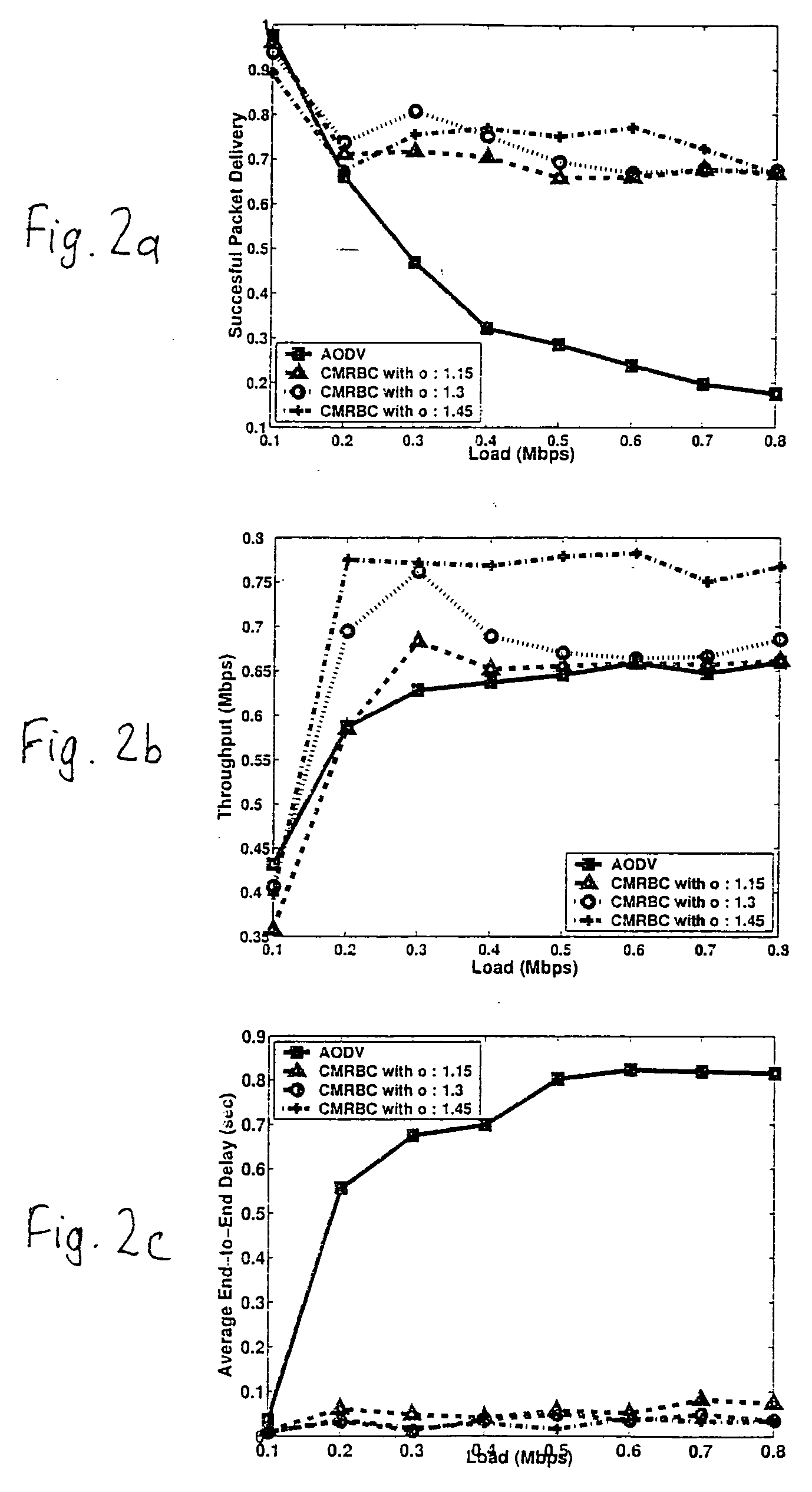Mobile ad-hoc network
a mobile ad-hoc network and network technology, applied in data switching networks, frequency-division multiplexes, instruments, etc., can solve the problems of unpredictability of network topology and inability to assign network resources in a predetermined way, so as to reduce the level of qos disruption and mitigate the effect of qos disruption caused by rerouting in man
- Summary
- Abstract
- Description
- Claims
- Application Information
AI Technical Summary
Benefits of technology
Problems solved by technology
Method used
Image
Examples
Embodiment Construction
[0018] We define Relay Bandwidth Capacity (RBC), with RBCI indicating the traffic capacity that station I can support: RBCI=c BI(t)min(m,n)n log3n (bit / s)(1)
where, c(>0) is a constant; BI(t) is the Two-Hop Residual Bandwidth; m and n are the number of mobile and static nodes, respectively.
[0019] Since the interference range is twice the transmission range for an IEEE 802.11 MAC equipped node, the Two-Hop Residual Bandwidth: BI(t)=B-∑J∈N(I)B(J)ϕ (bit / s)(2)
where B is the raw channel bandwidth, the summation is the overall consumed bandwidth from node I's two-hop neighborhood nodes, JεN(I) and φ is a factor to account for MAC's four-way handshake (RTS / CTS / DATA / ACK), packet collision and re-transmission, back-off scheme nature.
[0020] Bandwidth Variation, ΔBI(t) keeps the estimated maximum change of BI(t) before the next update is implemented during the route discovery stage:
ΔBInew(t)=[α·ΔBIold(t)]+[(1−α)·β·|BInew(t)−BIold(t)|] (3)
where α(1) are adjustable p...
PUM
 Login to View More
Login to View More Abstract
Description
Claims
Application Information
 Login to View More
Login to View More - R&D
- Intellectual Property
- Life Sciences
- Materials
- Tech Scout
- Unparalleled Data Quality
- Higher Quality Content
- 60% Fewer Hallucinations
Browse by: Latest US Patents, China's latest patents, Technical Efficacy Thesaurus, Application Domain, Technology Topic, Popular Technical Reports.
© 2025 PatSnap. All rights reserved.Legal|Privacy policy|Modern Slavery Act Transparency Statement|Sitemap|About US| Contact US: help@patsnap.com



